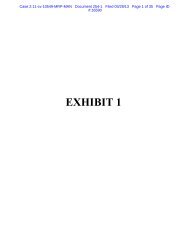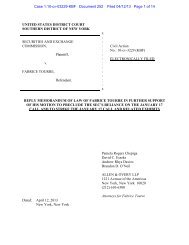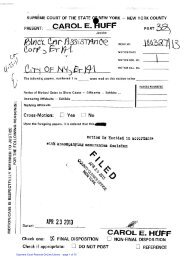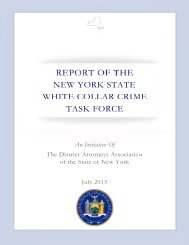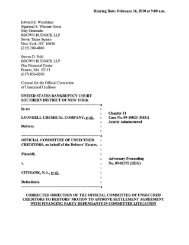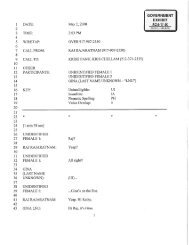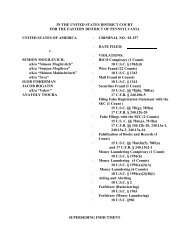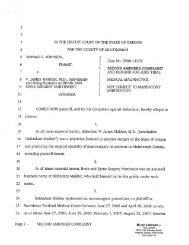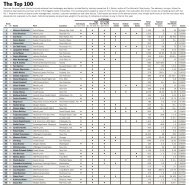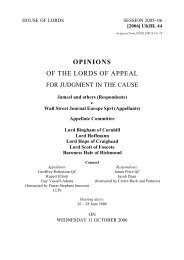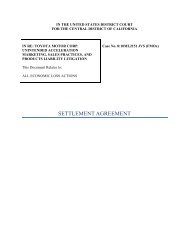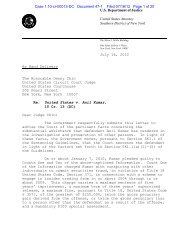Salz Review - Wall Street Journal
Salz Review - Wall Street Journal
Salz Review - Wall Street Journal
Create successful ePaper yourself
Turn your PDF publications into a flip-book with our unique Google optimized e-Paper software.
<strong>Salz</strong> <strong>Review</strong><br />
An Independent <strong>Review</strong> of Barclays’ Business Practices<br />
156<br />
12.30 Barclays has recently revised its reputational risk framework to help it consider more<br />
consistently and systematically the impact of business decisions on its reputation.<br />
The framework defines roles and responsibilities for managing reputational risk for<br />
all businesses and functions, including the newly formed Citizenship team. The<br />
framework also defines a governance structure for raising and escalating reputational<br />
risk issues from Reputation Councils to the new Board Conduct, Reputational and<br />
Operational Risk Committee. The Reputation Councils conduct regular reviews of<br />
the effective operation of the reputational risk framework. This effort is being<br />
reinforced by a reputation management initiative to embed better capabilities in the<br />
businesses to identify, mitigate and manage reputational risks.<br />
12.31 Barclays has also conducted a business line review within the investment bank.<br />
Reputational impact was one of three criteria used to determine which businesses to<br />
exit or significantly modify.<br />
12.32 Barclays has begun to elevate reputational risk by classifying it as a Principal Risk and<br />
trying to build it more into its decision making. Ultimately, it is how its staff and<br />
leadership behave, coupled with effective governance, which will determine its<br />
success in rebuilding its reputation.<br />
Recommendation 29: Conduct, reputational and operational risk<br />
Barclays should ensure its conduct, reputational and operational risk framework<br />
includes the articulation of a tangible risk appetite statement and mechanisms to<br />
ensure that conduct, reputational and operational risk are fully factored into<br />
business decisions and governance.<br />
The First and Second Lines of Defence: Risk Culture and Learning<br />
12.33 We now look at three aspects of a control environment that matter for both the first<br />
and second lines of defence.<br />
Risk Culture<br />
12.34 Strengthening the risk management culture requires embedding a risk appetite<br />
framework, while clarifying the roles and responsibilities of the first and second lines<br />
in the control frameworks.<br />
12.35 We did not find it easy to discern who is responsible for each aspect of the daily<br />
management of risks and the associated controls. This is important if performance<br />
management is to reinforce accountability for risk. The personal development<br />
objectives we reviewed show that qualitative risk management and control<br />
environment objectives were included in individual performance appraisals.<br />
However, we have observed that these objectives were somewhat undifferentiated<br />
across cohorts and job roles. In addition, risk and control themes were rarely<br />
mentioned in the actual performance assessments and were typically not explicitly<br />
weighted in the overall performance grade. Overall, it was hard to determine what



